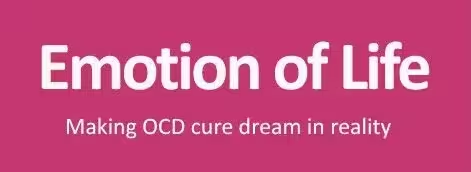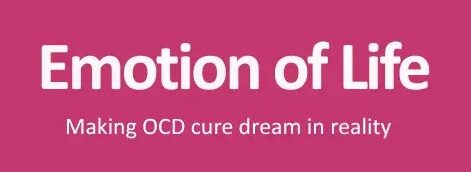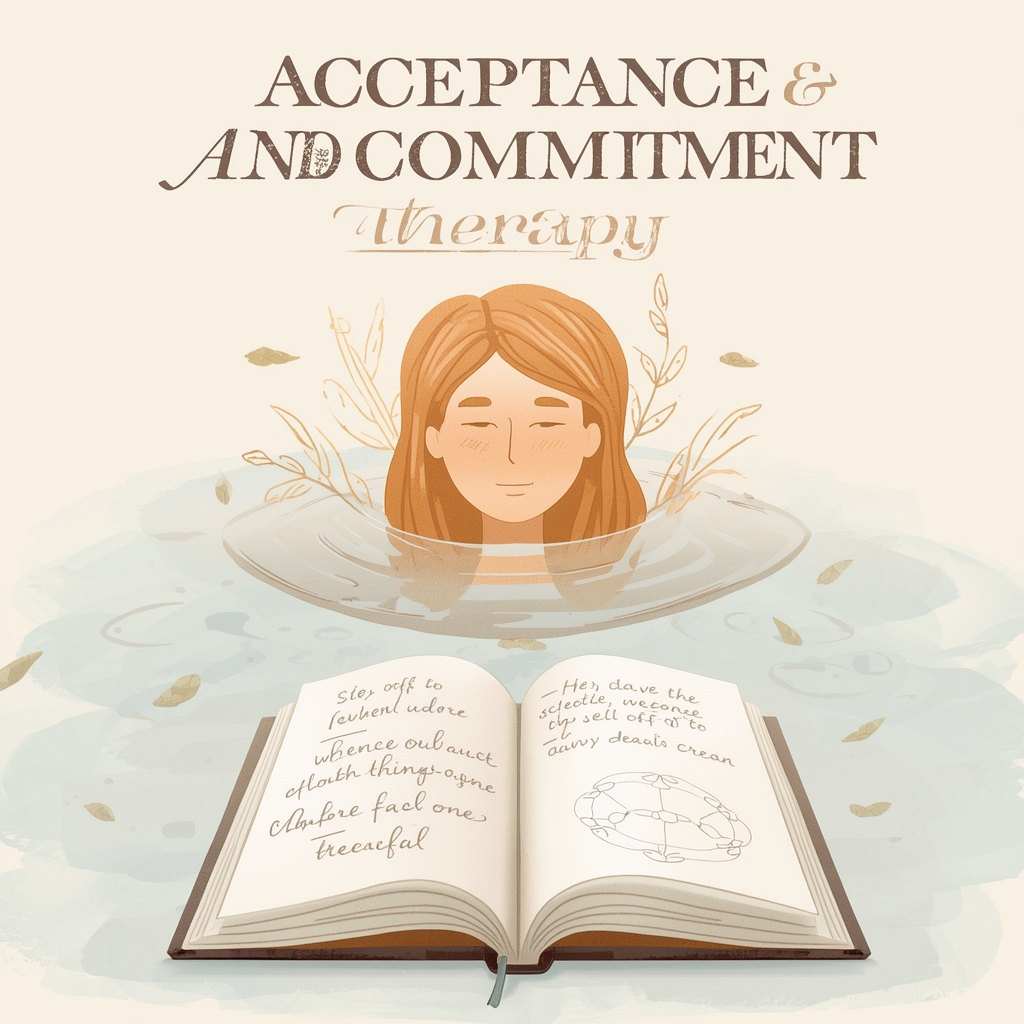Acceptance Commitment Therapy For OCD is a highly effective and well-researched approach in contemporary psychology for addressing various emotional and behavioral issues. ACT emphasizes the importance of accepting challenging thoughts and feelings rather than fighting them, while encouraging individuals to take actions that align with their values. This combination of acceptance and proactive behavior enables ACT to effectively alleviate suffering, foster resilience, and enhance psychological flexibility. Central to ACT is the notion of psychological flexibility, which involves being open to internal experiences while actively choosing behaviors that reflect what truly matters.
Acceptance Commitment Therapy For OCD, instead of striving to eliminate feelings like anxiety or sadness, it focuses on transforming the relationship individuals have with these emotions. By moving from avoidance to mindful acceptance, individuals can lead more fulfilling lives. ACT is beneficial for children, teenagers, and adults facing issues such as anxiety, depression, obsessive-compulsive disorder, trauma, stress, and chronic pain. It integrates mindfulness strategies, behavior change techniques, and value-based approaches, serving as both a therapeutic model and a way of approaching life.
The strength of Acceptance Commitment Therapy For OCD lies in its blend of scientific principles and compassionate practice. Rather than promoting control over thoughts, it encourages individuals to observe and accept them without judgment, allowing thoughts and feelings to lose their control over actions. With consistent practice, Acceptance Commitment Therapy For OCD helps individuals confront uncertainty and discomfort while making choices that honor their personal goals.
Principles of Acceptance Commitment Therapy For OCD
ACT is grounded in six interconnected processes that enhance psychological flexibility. These processes are not strict steps but rather fluid interactions that occur throughout therapy.
- The first principle is acceptance, where clients learn to embrace unpleasant emotions instead of evading them. While avoidance might provide short-term relief, it exacerbates suffering in the long run; acceptance disrupts this cycle.
- The second principle, cognitive diffusion, teaches clients to perceive thoughts as mere thoughts rather than absolute truths, thereby diminishing their impact.
- The third principle involves being present, rooted in mindfulness practices that encourage clients to remain anchored in the current moment and observe their experiences without judgment.
- The fourth, self-as-context, helps individuals recognize they are more than their thoughts or feelings, acting as observers of their internal experiences.
- The fifth principle, values clarification, assists clients in identifying what genuinely matters to them in life.
- Lastly, committed action involves taking consistent steps towards those values, even in the face of discomfort. Together, these processes facilitate a transition from avoidance to a more engaged and purposeful lifestyle.
Acceptance Commitment Therapy For OCD Techniques
ACT employs a variety of techniques that combine mindfulness, behavior change, and values exploration.
- One common method is mindfulness practice, where clients learn to observe their breath and bodily sensations or thoughts without attempting to alter them, enhancing self-awareness and minimizing automatic responses.
- Cognitive diffusion techniques include exercises such as verbalizing distressing thoughts until they lose their emotional weight or visualizing thoughts as clouds passing by, which lessens their literal power.
- Acceptance Commitment Therapy For OCD places a strong emphasis on values clarification exercises, prompting clients to consider various life domains such as relationships, career, and health and identify their core values. Tools like the “bullseye worksheet” or “values card sort” help clarify and solidify these values.
- When fears impede behavior, exposure tasks are utilized, intentionally framed to encourage willingness to face discomfort while pursuing valued goals. For instance, a student coping with social anxiety may practice participating in class discussions to align with their value of personal growth, rather than aiming to eliminate their fear.
- Another crucial technique is the use of metaphors. Acceptance Commitment Therapy For OCD therapists often employ powerful metaphors, such as viewing unwanted thoughts as noisy passengers on a bus or recognizing that struggling in “quicksand” makes one sink deeper while acceptance allows for floating. These metaphors illustrate abstract ideas concretely.
- Additionally, committed action plans break values-based goals into small, attainable steps, with accountability integrated into therapy.
- The combination of metaphors, mindfulness practices, diffusion techniques, and committed action results in a highly experiential and engaging therapeutic process.
Acceptance Commitment Therapy For OCD Steps
An ACT therapy program typically follows a sequence, although the order may adapt to meet individual client needs.
- The initial step is assessment and psychoeducation, where the therapist explains how avoidance and thought fusion contribute to suffering, introducing the concept that trying to control is the problem, not the solution.
- This is followed by developing mindfulness and awareness skills, where clients practice being present, noticing their thoughts and feelings without judgment.
- Activities such as mindful breathing or observing sounds help them focus their attention. Once mindfulness skills are established, cognitive diffusion strategies are introduced, helping clients detach from the literal meanings of their thoughts.
- Next comes acceptance work, where clients learn to confront discomfort, especially in cases of anxiety, OCD, or trauma where avoidance is prevalent.
- Acceptance Commitment Therapy For OCD involves embracing feelings without submitting to them, while pursuing meaningful actions.
- The process then shifts to exploring values, enabling clients to define what matters most to them, often igniting motivation to lead a life shaped by love, connection, growth, or creativity rather than fear.
- The final step involves committed action, where clients create values-based goals and engage in small, actionable steps aligned with those values.
- Therapists support consistency and prepare clients for potential challenges. Over time, clients learn that discomfort and values can coexist, emphasizing that living meaningfully is more critical than avoiding pain.
- Maintenance includes relapse prevention, reminding clients that painful thoughts can return, but they can employ Acceptance Commitment Therapy For OCD tools to respond differently.
Acceptance Commitment Therapy For OCD for Different Populations
ACT for OCD is highly versatile and can be tailored for diverse age groups.
- For children and adolescents, concepts are often conveyed through stories, games, and relatable metaphors to make them more accessible. For instance, a child anxious about social situations might learn to perceive anxious thoughts as “pop-up ads” that they can notice but not engage with.
- For adults, ACT for OCD aligns effectively with managing workplace stress, chronic health conditions, and trauma recovery.
- In healthcare contexts, ACT for OCD aids patients with chronic pain by focusing on engaging in valued activities rather than merely trying to eliminate symptoms.
- Additionally, ACT for OCD can be combined with Exposure and Response Prevention techniques for OCD and anxiety to enhance acceptance and willingness.
Effectiveness of Acceptance Commitment Therapy For OCD
ACT’s effectiveness stems from its focus on changing how clients relate to their thoughts and emotions instead of trying to alter their content. Unlike traditional cognitive-behavioral therapy, which aims to challenge and modify distorted beliefs, ACT for OCD encourages clients to observe and accept their thoughts without struggle. This paradigm shift lessens the power of thoughts and enhances behavioral flexibility. By centering values in the therapy process, ACT for OCD provides motivation and meaning, allowing individuals to confront discomfort more readily when it aligns with their core values. This is why ACT for OCD is often seen as a therapeutic approach that effectively combines mindfulness with proactive action.
FAQ
How does ACT for OCD differ from traditional Cognitive Behavioral Therapy (CBT)?
Unlike CBT, which challenges and restructures unhelpful thoughts, ACT focuses on changing the relationship with those thoughts through mindfulness and acceptance. It emphasizes values-based living instead of symptom control.
Is ACT the same as mindfulness?
ACT for OCD incorporates mindfulness but goes beyond it. While mindfulness teaches awareness of the present moment, ACT for OCD combines mindfulness with values clarification and committed action, creating a complete therapeutic approach.
Can ACT be used for children and teenagers?
Yes, ACT for OCD can be adapted for children and adolescents through metaphors, stories, and playful exercises. It helps them manage anxiety, improve emotional regulation, and build resilience at an early age.
How long does Acceptance Commitment Therapy For OCD take to work?
The duration varies depending on the individual and the condition being treated. Many people notice benefits within 8–12 sessions, though long-term practice of ACT principles leads to lasting results.
Can I practice ACT for OCD techniques on my own?
Yes, many ACT exercises such as mindfulness, thought diffusion, and values clarification can be practiced independently. However, working with a trained therapist at Emotion of life often deepens the effectiveness and personalization of the therapy.
Conclusion
Acceptance Commitment Therapy For OCD is not just a therapeutic method; it represents a way of life. By emphasizing mindfulness, acceptance, diffusion, values, and committed action, ACT equips individuals to build resilience and live fully, even amidst pain and uncertainty. The therapy fosters psychological flexibility, a vital skill that protects against stress, promotes emotional well-being, and nurtures healthier relationships. ACT takes a deeply human-centered approach, recognizing that while suffering is part of life, meaning, purpose, and joy are still within reach.
For those grappling with OCD, ACT provides a pathway not to escape discomfort but to coexist with it while pursuing what truly matters. By learning to accept their inner experiences, detach from unproductive thoughts, and commit to meaningful actions, individuals can break free from the cycle of avoidance. Thus, Acceptance Commitment Therapy For OCD emerge as one of the most transformative methods in modern psychology.


